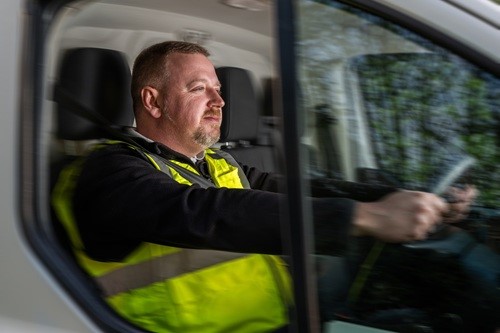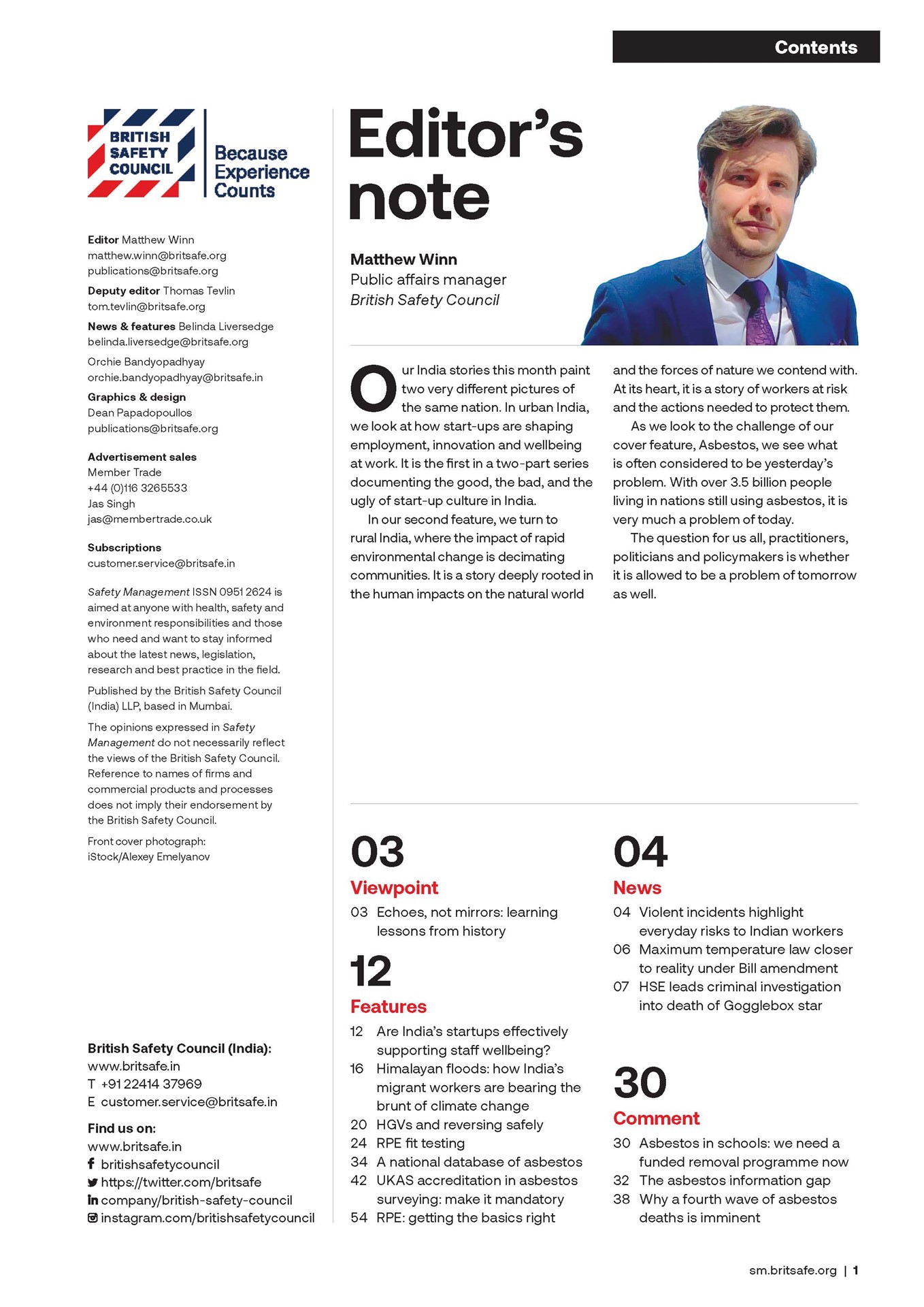Fleet and video telematics are increasingly relied on by employers to spot and improve driver behaviour, but it’s essential drivers understand the purpose is to ensure their safety, rather than a tool for punishing them.
Features
Making the most of telematics with effective driver engagement and buy-in
Fleet and video telematics is evolving rapidly, but this can lead to driver apprehension and misunderstanding, and in turn, opposition about the greater use of technology to monitor their behaviour behind the wheel. Not everyone is supportive of change, with the biggest pushback normally around privacy issues and a belief that they are being watched all the time. Therefore, how do fleets engage with their drivers to make best use of telematics and maximise safety improvements, while overcoming their concerns?
 Photograph: iStock
Photograph: iStock
While the benefits of fleet and video telematics are clear, suspicion and mistrust amongst drivers can still be an issue for vehicle operators says Vernon Bonser, UK and EU sales director at Queclink Wireless. “Buy-in is essential, so involving drivers and unions upfront is an effective way of overcoming any concerns. Taking an honest and clear approach – providing complete visibility of the data – will help them understand why the decision has been taken and what it will achieve. This also helps to tackle some of the common misconceptions at the start of the journey.”
Sam Footer, partnership director of Surecam, points out that it is important to convince drivers that the purpose of the technology is non-punitive and primarily aimed at making them safer. “Any measures should always be more carrot than stick. You need to explain the reasons behind it being adopted and why it is a benefit to them, with ongoing communication that gives them an opportunity to contribute to the entire process and express any worries they have.”
“Only by making the message resonate with the driver will they start to consider the consequences of their own actions,” adds Steve Thomas, managing director of Ctrack UK. “When they understand that the focus is ensuring their safe return home each day, along with everyone else on the roads, then it becomes much more personal.”
In-cab coaching
Advancements in AI camera technology have led to in-cab coaching solutions that identify and address high-risk driver behaviour as it happens. Using a combination of road and driver-facing devices, dangerous events such as tailgating, mobile phone use, fatigue, smoking, eating, and eyes away from the road can be detected, providing immediate audio warnings to drivers, while fleet managers gain full visibility from the office.
In-cab coaching has already proven to be highly effective, especially amongst higher-risk drivers. According to SureCam’s Sam Footer: “Targeting the bottom 10 per cent of drivers in terms of safety certainly has huge potential for securing improvements. One fleet found that their worst performing drivers were generating 17 times more risk events than the best drivers.
Within four months of adopting AI dashcams with a coaching system, the high-risk drivers had cut events by 56 per cent and were only generating four times the number when compared to their better performing peers.”
Despite this, there have been some concerns amongst drivers around privacy as well as the frequency of false positives, where the technology may incorrectly identify actions. Despite growing evidence about the dangers of driver distraction, opposition from drivers and unions has resulted in examples of fleets delaying or even halting planned AI camera rollouts.
 Within months of adopting AI dashcams with a coaching system, high-risk drivers had cut events by more than half. Photograph: iStock
Within months of adopting AI dashcams with a coaching system, high-risk drivers had cut events by more than half. Photograph: iStock
Recent industry research found that a large proportion of drivers are worried about the use of in-cab cameras, mainly around how any recorded footage is used and secured. However, they were more open to the use of the technology for real-time, in-cab-coaching if video was not stored for later review and analysis, while almost all would welcome the technology if footage could prove they were not at fault after a collision.
“By working closely with drivers and their unions, it is possible to develop telematics solutions that consider and alleviate any privacy concerns,” explains Ctrack’s Steve Thomas. “For example, we have adapted our AI camera to provide in-vehicle safety alerts without the device recording. This allows the device to warn the driver of any distraction, drowsiness or mobile phone usage behind the wheel, while removing a potential barrier to adoption.”
SureCam’s Sam Footer suggests an alternative way, providing drivers with an opportunity to self-correct to avoid an alert to the fleet manager being triggered. “For us, the best alert is the one you do not get, so have a process where the driver can change behaviour within the set time limit. These ‘nudges’ are still recorded to provide visibility of performance reporting and driver league tables, but it’s a more balanced and efficient approach. It means both buy-in and ROI can be measured better, as it is possible to see how the driver responds to the in-cab coaching and how much management time is then freed up.”
Meanwhile, mobile phone blocking software can now offer a non-intrusive alternative to driver-facing AI cameras for those fleets wanting to take a zero-tolerance approach to illegal device usage but facing pushback from drivers. According to Mark Hadley, CEO of Blackout Technologies, this emerging innovation can help eliminate illegal smartphone usage without raising privacy concerns increasingly linked with some AI camera solutions.
“Fleets need to remove the impulse for drivers to take their eyes off the road as smartphone distraction is thought to contribute to as many as 40 per cent of vehicle collisions,” says Mark. “Blocking technology can tackle the problem at root by stopping illegal mobile device usage in the first place, without the perceived intrusion on a driver while at work. By eliminating this distraction, it becomes possible to prevent many avoidable road injuries and deaths.”
Driver apps
Driver apps are becoming an important part of a fleet manager’s toolkit as they look for ways of automating processes and improving engagement and buy-in, while at the same time, easing the heavy workload that is often leaving them overwhelmed. Day-to-day responsibilities can often leave little time to focus on strategic priorities and longer-term planning, so apps are increasingly used for solutions focused on safety, compliance and productivity.
Ctrack’s Steve Thomas explains that the latest driver app innovations are helping with key areas of fleet management as they provide real-time communication, data collection and operational oversight. “Vehicle checks, private/business mileage, job allocation and proof of work functionality can save time for both the driver and the fleet manager, while ensuring high levels of compliance. Meanwhile, league tables and targeted training can encourage responsible driving and dramatically cut driver risk.”
Engagement around driver behaviour is certainly one area that has gathered pace recently with a host of tools now integrated with fleet and video telematics systems. By having an app to provide drivers with supportive feedback, based on their performance, fleets can achieve significant improvements.
“The ability to share automated safety messages, performance reports and training modules via an app is supporting a responsible and safer driving culture,” comments Nigel Lawrence, director of Applied Driving. “This is not simply about changing attitudes, but also behaviours, by regularly delivering focussed driver training and treating drivers as individuals with unique needs. In pilots, we saw a dramatic change in driving performance with a significant reduction in speeding (68 per cent), hard braking (70 per cent), and rapid acceleration (90 per cent).”
 Smartphone distraction is thought to contribute to as many as 40 per cent of vehicle collisions. Photograph: iStock
Smartphone distraction is thought to contribute to as many as 40 per cent of vehicle collisions. Photograph: iStock
For SureCam’s Sam Footer, an effective mobile app can improve safety performance by automating and streamlining coaching processes and driver engagement. “The volume of harsh driving and driver distraction events from an AI dashcam can be huge, so it’s about using this information effectively to trigger automated coaching actions based on type, severity and frequency.”
Mobile apps have also shown to be highly effective at targeting drivers from a gamification perspective. According to Ctrack’s Steve Thomas: “Giving drivers an individual score alongside company and peer group averages, is a proven way of achieving improved performance. Gamification can certainly motivate change, and for even greater returns it can be linked to an incentive scheme that rewards the best or preferably the most improved performers.”
Fleet and video telematics solution need to prioritise collaboration and engagement with the driver, making them an essential part of any technology roll-out and ongoing process. The goal is to ultimately save lives, so it is about using the best tools available and getting the highest levels of buy-in to make the most of the technology.
For more information see:
applied-driving.com
blackout-technologies.com
ctrack.com/uk
queclink.com
surecam.com


FEATURES

Delhi’s air pollution problem leaves construction workers jobless and without pay
By Orchie Bandyopadhyay on 10 November 2025
Every autumn and winter, Delhi experiences terrible air pollution that places the health of its 40 million residents at grave risk. But government measures to alleviate the problem by temporarily closing construction sites mean hundreds of thousands of daily-wage labourers are being left without wages and a means of financial support.

India’s road rage crisis: how professional drivers are bearing the brunt
By Orchie Bandyopadhyay on 10 November 2025
High profile reports of violent attacks on people who drive for work purposes, like bus and delivery drivers, have shone a spotlight on the growing problem of road rage in India. Commentators say it is now time for the Government to step up prosecutions of those who act aggressively on the road, while educating drivers on stress management techniques, to tackle the problem.

